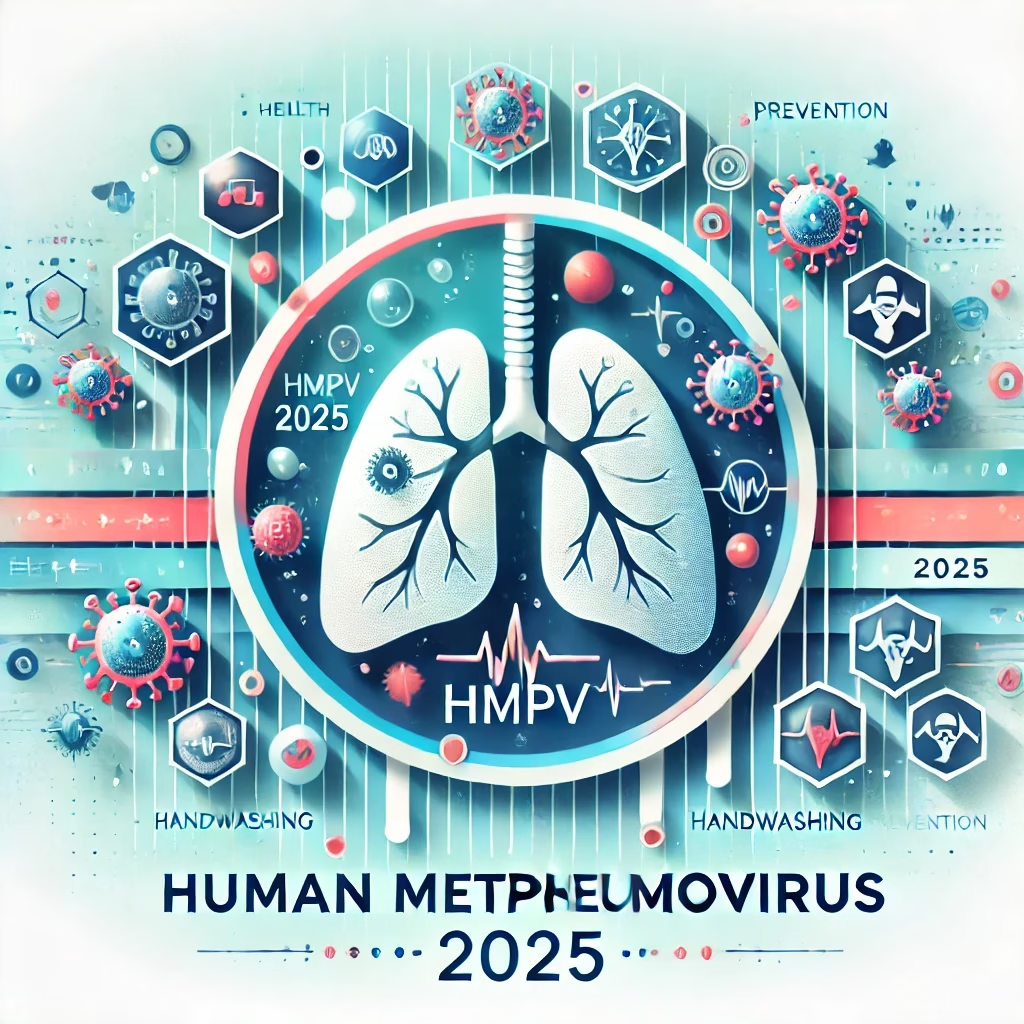Human Metapneumovirus (hMPV) represents a critical pathogen within the realm of respiratory virology, having significant implications for global public health since its identification in 2001. As seasonal outbreaks persist and awareness of respiratory health intensifies, a sophisticated understanding of hMPV is imperative for advancing preventive and therapeutic measures. 🦠🌍📅
Taxonomy and Virology of hMPV
hMPV is classified under the Paramyxoviridae family, phylogenetically allied to the respiratory syncytial virus (RSV). This single-stranded, negative-sense RNA virus is a causative agent of diverse respiratory tract infections. The virus is stratified into two primary genetic lineages, A and B, each comprising multiple sublineages, underscoring its genomic complexity and epidemiological significance. The genomic architecture of hMPV necessitates rigorous molecular surveillance to elucidate its evolutionary dynamics. 🧬🔬📈
Transmission Pathways and Epidemiological Patterns
hMPV primarily propagates via respiratory droplets expelled during coughing or sneezing by infected individuals. Secondary transmission occurs through fomite-mediated contact or interpersonal proximity. Seasonal prevalence, notably during late winter and early spring, accentuates the need for heightened vigilance and preemptive strategies in susceptible populations. 🤧🤝🕒
Clinical Manifestations: A Spectrum of Severity
The clinical presentation of hMPV infection is contingent upon host factors such as age, comorbidities, and immunological status.
- Mild manifestations: Characterized by nonspecific upper respiratory symptoms, including rhinorrhea, pharyngitis, and low-grade fever.
- Severe manifestations: Encompassing lower respiratory involvement such as bronchitis, bronchiolitis, and pneumonia, particularly in pediatric, geriatric, and immunocompromised cohorts.
Prompt medical consultation is essential for individuals exhibiting persistent or exacerbating respiratory symptoms, enabling differential diagnosis and timely intervention. 🏥📋🔍
Populations at Elevated Risk
The burden of hMPV disproportionately affects specific demographic and clinical groups:
- Pediatric populations: Neonates and infants are predisposed due to immature immune defenses.
- Elderly individuals: Age-associated immunosenescence amplifies susceptibility.
- Immunocompromised hosts: Patients with malignancies, organ transplants, or chronic illnesses face heightened risks of severe disease outcomes. 👶👴💉
Diagnostic Paradigms
The accurate identification of hMPV is pivotal for clinical management and epidemiological surveillance. Diagnostic modalities include:
- Polymerase Chain Reaction (PCR): The gold standard for detecting viral RNA with high sensitivity and specificity.
- Antigen Detection Assays: Rapid screening tools suitable for preliminary diagnosis.
- Serological Testing: Employed for retrospective analysis and research purposes rather than routine diagnostics. 🧪🩺🔬
Therapeutic Approaches and Management
To date, no antiviral agents are specifically licensed for hMPV treatment. Management primarily entails supportive care:
- Hydration: Adequate fluid intake to counteract dehydration.
- Antipyretics and Analgesics: Symptomatic relief through medications like acetaminophen or ibuprofen.
- Advanced Support: Hospitalization and supplemental oxygen in severe cases, including mechanical ventilation if warranted. 💊💧🏨
Prophylactic Measures Against virus
Given the absence of a targeted vaccine, prevention hinges on behavioral and environmental interventions:
- Rigorous hand hygiene: Frequent washing with soap and water.
- Respiratory etiquette: Covering coughs and sneezes to mitigate droplet dispersion.
- Environmental sanitation: Regular disinfection of high-touch surfaces.
- Social distancing: Minimizing exposure to symptomatic individuals during peak seasons. 🧼🙌🚫
hMPV: Implications for Public Health in 2025
The prominence of hMPV in contemporary respiratory health underscores its role in shaping public health policies. The incorporation of “respiratory infection prevention,” “viral epidemiology,” and “seasonal outbreak preparedness” into healthcare discourse reflects the virus’s pervasive impact. 🌟📊🩹
Future Directions: Research and Vaccine Development
Innovative research endeavors are crucial to address the unmet medical needs associated with hMPV. Efforts are underway to elucidate viral pathogenesis, identify immunological targets, and develop prophylactic vaccines. Advances in molecular biology and immunotherapeutics offer hope for mitigating the virus’s clinical and societal burden. 🔮💉🧪
Conclusion
Human Metapneumovirus remains a formidable pathogen in the domain of respiratory infections. A comprehensive understanding of its virology, epidemiology, and clinical management is essential for curbing its public health impact. Stakeholders must prioritize preventive strategies and support ongoing research initiatives to enhance global health resilience against hMPV. 🛡️💡🌍
also read: Farmer Registry
also read: HMPV vs Covid-19: Understanding the key differences and dangers

Great analysis! It’s impressive how data-driven insights can predict outcomes. For those looking to explore AI-driven tools, Best AI Tools offers a well-curated directory worth checking out.
Great read! It’s fascinating how AI is reshaping strategy in poker and beyond. Tools like Suna AI Agent are pushing the boundaries of autonomous decision-making-definitely something tournament players should keep an eye on.